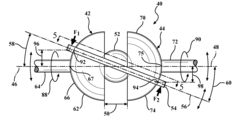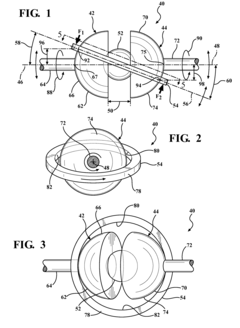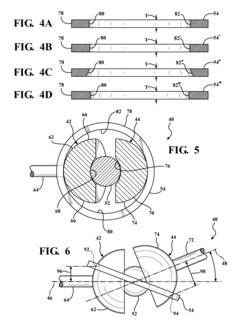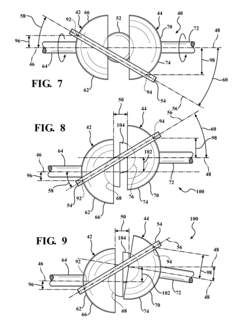Improving Fuel Efficiency Through Continuously Variable Transmission Technology
CVT Technology Background and Goals
The primary objective is to comprehensively analyze the development trajectory and current status of continuously variable transmission (CVT) technology, which aims to improve fuel efficiency in vehicles. This includes exploring the key milestones and technological advancements that have shaped the evolution of CVT systems over time.
Additionally, it is crucial to identify the current technical challenges and bottlenecks hindering further progress in this field, as well as the geographical distribution of expertise and research efforts related to CVT technology. By understanding the historical context, present obstacles, and regional concentrations, a solid foundation can be established for charting the future course of CVT development and innovation.
Market Demand for Fuel-Efficient Transmissions
- Rising Fuel Costs
With the increasing cost of fuel, there is a growing demand for vehicles with improved fuel efficiency to reduce operating expenses for both consumers and commercial fleets. - Environmental Concerns
Stricter emissions regulations and a greater emphasis on sustainability have driven the need for more fuel-efficient transmissions that can help reduce greenhouse gas emissions and improve air quality. - Competitive Advantage
Automakers that can offer vehicles with superior fuel economy have a competitive edge in the market, as consumers are increasingly prioritizing fuel efficiency when making purchasing decisions. - Fleet Management
Commercial fleet operators, such as logistics companies and delivery services, are seeking fuel-efficient vehicles to minimize operational costs and improve profitability. - Emerging Markets
In developing countries with rapidly growing economies and rising vehicle ownership, there is a significant demand for affordable and fuel-efficient vehicles to meet transportation needs while minimizing fuel consumption.
Current State and Challenges of CVT
- Current Adoption
CVT technology has seen widespread adoption in passenger vehicles, particularly in compact and mid-size cars, due to its ability to improve fuel efficiency and provide a smoother driving experience. - Technical Challenges
Key challenges include durability issues with the belt or chain mechanism, limited torque capacity, and potential for power losses at high speeds or under heavy loads. - Geographic Distribution
CVT technology is primarily developed and manufactured by automakers in Japan, Europe, and North America, with Japanese companies like Nissan and Honda being early pioneers.
Existing Solutions for CVT Fuel Efficiency
01 CVT design for improved fuel efficiency
Optimizing the CVT design to reduce friction losses, enhance torque transfer capabilities, and operate the engine in its most efficient range.- CVT design for improved fuel efficiency: Optimizing the CVT design with features like gear ratio range, friction reduction, and advanced control strategies to maintain the engine's optimal operating range.
- CVT control strategies for fuel efficiency: Implementing control strategies to adjust gear ratios based on driving conditions, engine load, and vehicle speed, incorporating advanced algorithms and sensors for optimal transmission operation.
- CVT integration with hybrid or electric powertrains: Integrating the CVT with hybrid or electric powertrains, combining it with electric motors, battery packs, or other components to optimize power delivery and energy management.
- CVT friction reduction and efficiency improvements: Reducing friction and improving overall CVT efficiency through advanced materials, component design optimization, and lubrication strategies to minimize energy losses.
- CVT ratio control and torque transfer mechanisms: Incorporating advanced ratio control mechanisms and torque transfer components like planetary gear sets, clutches, or other mechanisms to achieve smooth and efficient ratio changes.
02 CVT control strategies for fuel efficiency
Developing control algorithms to adjust gear ratios based on driving conditions, engine load, and vehicle speed, maintaining the engine's efficient operating range.Expand Specific Solutions03 Integration of CVT with hybrid systems
Integrating the CVT with electric motors or energy storage devices to optimize power delivery and energy management for improved fuel efficiency.Expand Specific Solutions04 CVT design for specific vehicle types
Designing and optimizing the CVT for specific vehicle types like electric vehicles, motorcycles, or commercial vehicles to improve fuel efficiency based on their unique requirements.Expand Specific Solutions05 CVT with additional components for efficiency
Combining the CVT with additional components like superchargers, aftertreatment systems, or planetary gear sets to further enhance fuel efficiency and powertrain performance.Expand Specific Solutions
Key Players in CVT and Automotive Industry
GM Global Technology Operations LLC
SAIC Motor Corp. Ltd.
Core Innovations in CVT Technology
- The ability to provide more useable power, better fuel economy, and a smoother driving experience compared to traditional mechanical or automatic transmissions.
- A cvt allows for seamless and progressive changes in the transmission ratio, which sets it apart from other mechanical transmissions that offer a fixed number of gear ratios. this enables the engine to run at its most efficient rpm for a range of vehicle speeds, resulting in better fuel economy.cvts can also be used to maximize the performance of a vehicle by allowing the engine to turn at the rpm that produces peak power, which is typically higher than the rpm that achieves peak efficiency. this can create a more fuel-efficient vehicle. the nearly unlimited number of positions in the cvt helps ensure it is always using the appropriate amount of power.
Regulatory Landscape for Automotive Transmissions
The regulatory landscape for automotive transmissions is complex and evolving, driven by the need for improved fuel efficiency, reduced emissions, and enhanced vehicle performance. Governments worldwide have established various standards, such as the Corporate Average Fuel Economy (CAFE) standards in the U.S., which require automakers to meet specific fuel economy targets, alongside similar regulations in the European Union and China.
In addition to fuel economy and emissions regulations, safety standards are also crucial. These encompass durability testing, noise and vibration limits, and fail-safe mechanisms to ensure the safe operation of transmissions under diverse conditions. As the industry shifts towards electrification, new regulations are emerging to address challenges specific to electric and hybrid vehicles, including battery safety and the integration of advanced transmission technologies.
For automakers and transmission manufacturers, staying updated on regulatory changes is essential for compliance. Non-compliance can lead to financial penalties, market restrictions, and reputational damage. Overall, the automotive transmission regulatory landscape demands continuous monitoring and innovation to meet evolving demands for efficiency, safety, and performance.
Environmental Impact of CVT Technology
The adoption of continuously variable transmission (CVT) technology can significantly reduce fuel consumption and greenhouse gas emissions in the automotive industry. However, it is vital to evaluate its environmental impact throughout its lifecycle. The manufacturing phase involves extracting and processing materials, which can lead to resource depletion and emissions. Optimizing these processes and sourcing sustainable materials is essential.
The operation phase of CVT-equipped vehicles offers the greatest environmental benefits, improving fuel efficiency by up to 10% compared to conventional transmissions, thereby lowering CO2 emissions. However, these benefits depend on driving habits, maintenance, and energy sources for hybrid or electric vehicles. Additionally, end-of-life disposal and recycling of CVT components pose challenges, as improper handling can release hazardous materials. A holistic approach that encompasses sustainable manufacturing, responsible resource management, and effective recycling strategies is crucial to maximizing the advantages of CVT technology while minimizing its environmental footprint.



